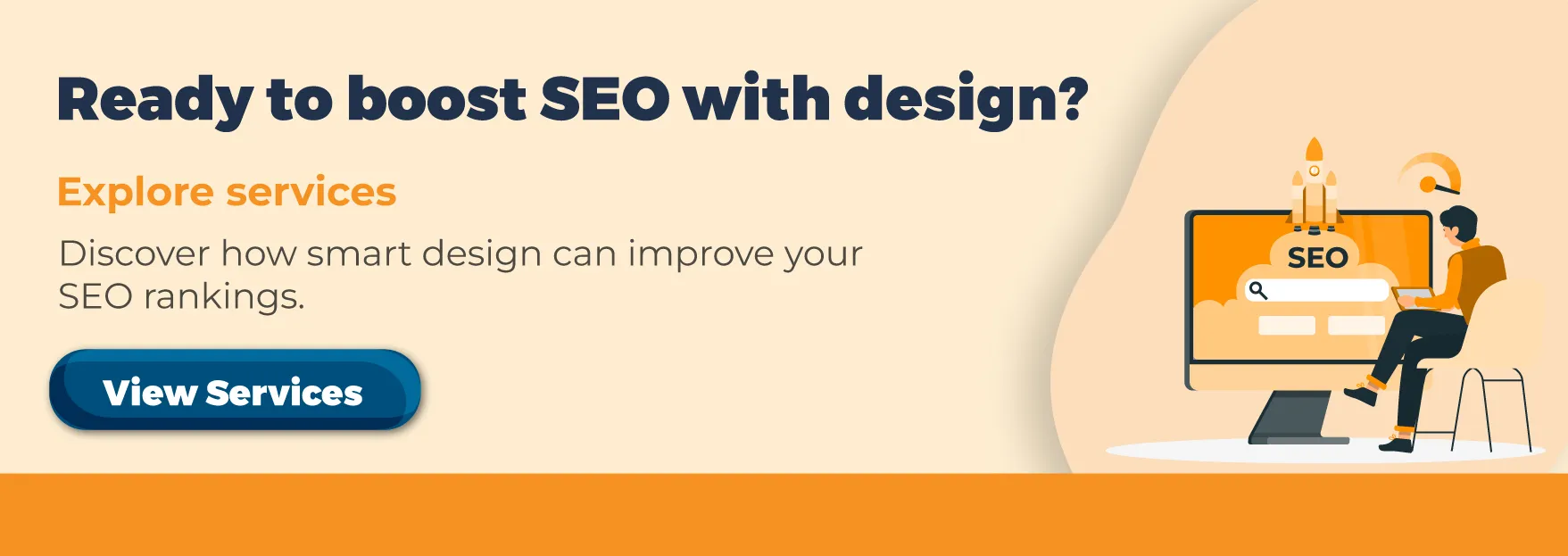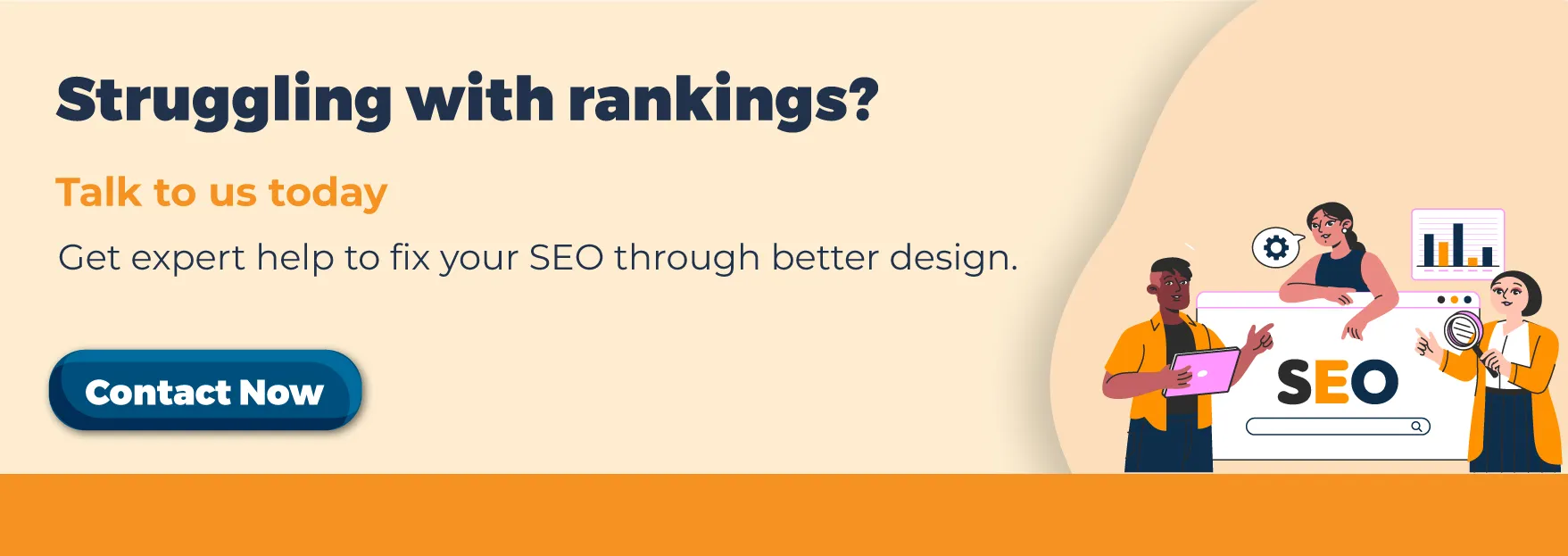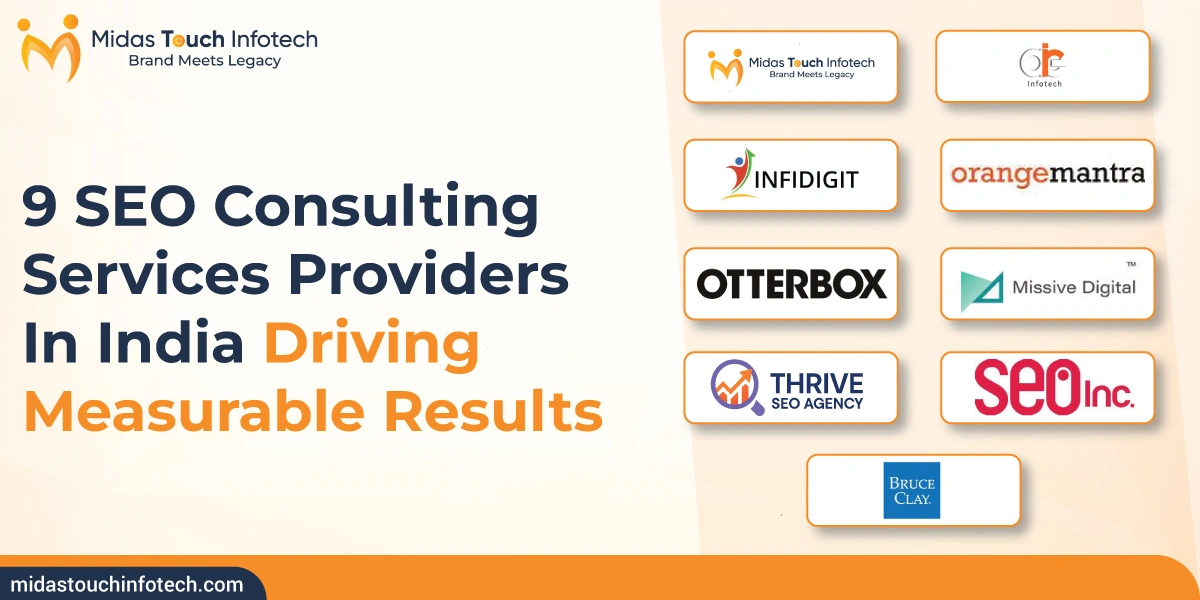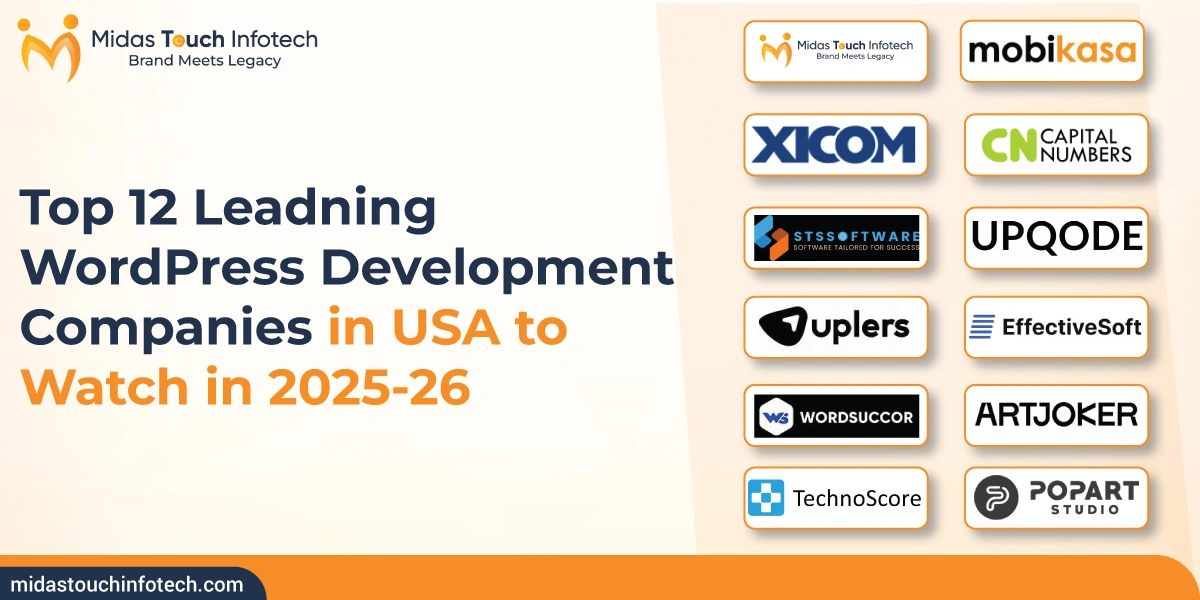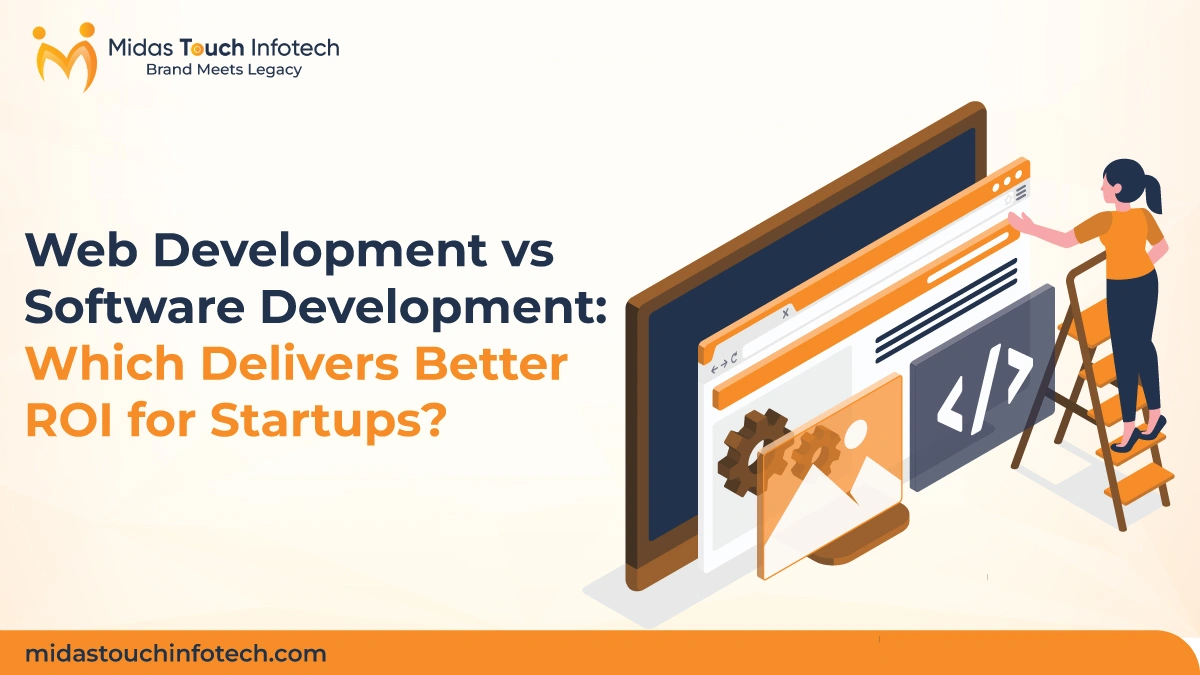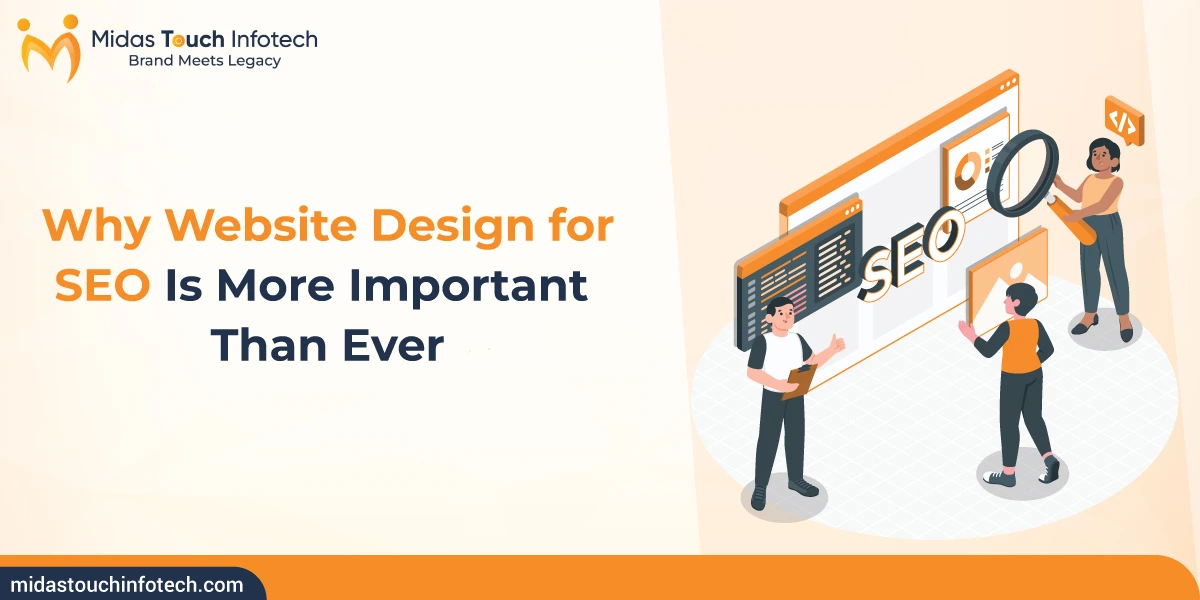
In today’s digital world, 93% of online experiences begin with a search engine. What’s more, 75% of users never scroll past the first page of search results, highlighting the critical importance of SEO in website performance. As competition intensifies, simply having a visually appealing website isn’t enough—websites must be designed explicitly for search engine optimisation (SEO).
The importance of blending design and SEO for digital success cannot be overstated. A website can have exceptional aesthetics, but without an SEO-friendly structure, it risks being invisible online. Conversely, robust SEO without thoughtful design leads to poor user engagement.
This blog dives deep into why custom website design services are essential for businesses aiming for sustainable digital success, detailing the intricate relationship between website design and SEO, highlighting key design elements, potential pitfalls, and future trends.
Understanding the Link Between Website Design and SEO
➥ What Is SEO-Friendly Website Design?
An SEO-friendly website design refers to developing websites that are easy for search engines to crawl, index, and understand, while also being user-centric. Such a design combines aesthetics, usability, content, and technical optimisation to boost online visibility.
Design elements that influence SEO include:
- Mobile responsiveness
- Fast loading speed
- User-friendly navigation
- Clean, structured coding
- Optimised images and multimedia
With Google’s algorithm updates increasingly emphasising usability, responsive and mobile-first designs have emerged as essential ranking factors.
➥ Why Google Prioritises User Experience (UX)
Google’s shift towards prioritising User Experience (UX) significantly impacts rankings. Metrics like bounce rates, session duration, and Core Web Vitals—which measure loading, interactivity, and visual stability—play pivotal roles in determining website ranking.
SEO rewards sites that offer:
- Intuitive navigation
- Fast loading speeds
- Engaging, user-centric experiences
Websites providing exceptional UX are rewarded with higher visibility and improved conversion rates.
Also Read: The Long-Term Benefits of Professional Web Design You Shouldn’t Ignore
Key Web Design Elements That Impact SEO
➥ Mobile Responsiveness
Google employs mobile-first indexing, meaning mobile-friendly website design for SEO is non-negotiable. Mobile responsiveness ensures that your website functions seamlessly on all devices, directly influencing SEO rankings.
Impact on Bounce Rate and Session Duration:
Websites not optimised for mobile lead to high bounce rates. Users abandon slow-loading, non-responsive pages quickly, resulting in lower rankings. Conversely, responsive design increases engagement, encouraging longer visits and higher session durations.
➥ Site Speed and Performance
Website loading speed is crucial, with Google prioritising fast-loading websites. Each additional second of load time can lead to a 7% loss in conversions.
Design best practices for speed optimisation include:
- Compressing images and media
- Minimising HTTP requests
- Reducing JavaScript and CSS files
- Using browser caching
- Opting for Content Delivery Networks (CDNs)
Implementing these practices dramatically improves user experience, thereby enhancing your SEO performance.
➥ Website Architecture and Crawlability
An SEO-friendly website structure ensures efficient indexing by search engines. Clear hierarchy, logical categorisation, and well-organised content help search engines understand your site’s relevance.
Role of internal linking in SEO:
Strategically placed internal links enhance crawlability, distribute link equity, and help search engines discover deep pages. A clear sitemap ensures all pages are indexed, maximising SEO value.
➥ Clean and SEO-Optimized Code
Clean coding practices significantly affect SEO. Search engines reward websites with well-structured, lightweight code, as it speeds up crawl times and enhances load performance.
Best practices include:
- Implementing schema markup for richer search snippets
- Proper use of HTML tags (title, meta descriptions, headers)
- Avoiding excessive or unnecessary scripts
How Design Choices Can Harm Your SEO
➥ Overuse of JavaScript and Flash
Though JavaScript enhances user interaction, its overuse may harm SEO. Flash content is largely inaccessible to search engine crawlers.
SEO alternatives to visual effects include:
- CSS animations
- HTML5 interactive elements
- Lightweight image sliders
Opting for these alternatives ensures your content remains visible and crawlable.
➥ Poor Navigation and UX
Confusing layouts and poor navigation result in high bounce rates. Websites that frustrate users with complicated designs not only lose potential customers but also suffer in rankings.
Poor UX often makes it challenging for search engines to index deeper pages effectively, impacting overall visibility.
➥ Non-Optimized Images and Media
Large, uncompressed images slow website loading times. Without SEO-friendly filenames or alt text, images become invisible to search crawlers, negatively affecting rankings.
Optimisation includes:
- Reducing file sizes
- Adding descriptive alt text
- Using relevant filenames with target keywords
Also Read: Web Design Best Practices Every Business Website Should Follow
Future Trends: SEO-Driven Web Design in 2025 and Beyond
➥ Rise of Voice and Visual Search
With voice and visual search rapidly increasing, future website designs must adapt to support these new formats. Optimising for conversational queries, structured data, and visual cues will become increasingly essential.
Designers must embrace simplicity and clarity to facilitate seamless interactions, positioning businesses ahead of competitors.
➥ Accessibility as a Ranking Factor
Accessibility isn’t just ethically necessary—it’s becoming a key ranking factor. Google now favours inclusive designs that provide equal access to all users, including those with disabilities.
Integrating accessible design elements, like ARIA labels, readable fonts, and keyboard-friendly navigation, directly contributes to SEO performance.
➥ AI and Smart Design Decisions
Artificial intelligence (AI) tools enable designers to balance aesthetics with SEO effortlessly. AI-driven analytics and predictive insights help optimise design choices, ensuring websites stay attractive, functional, and visible in search engines.
Practical Tips for Aligning Website Design with SEO
To effectively align your website design for SEO success, consider the following practical tips:
❑ Use responsive templates and frameworks: Choose frameworks that automatically adjust to different devices, ensuring consistent user experience.
❑ Keep navigation intuitive and consistent: Simplify navigation structures, reduce clicks, and clearly label menus for easier exploration.
❑ Optimize images with alt text and compression: Ensure images load quickly and enhance visibility through descriptive alt tags.
❑ Structure content using proper header tags (H1-H3): Clearly formatted content using header tags improves readability and SEO.
❑ Implement SEO-friendly URLs and meta tags: Use concise, keyword-rich URLs, compelling meta descriptions, and titles for increased click-through rates.
❑ Include calls-to-action without clutter: Balance user actions without overwhelming the interface, keeping users engaged and converting.
Ready to Transform Your Business with Website Design for SEO?
Summarising the synergy between SEO and website design underscores why working with a professional web design company in India has become essential. SEO and design are intertwined, influencing not just visibility but user experience, brand credibility, and conversions.
Design is no longer purely aesthetic—it’s strategic. Ignoring SEO in website design could leave your business invisible to potential customers, losing significant competitive advantages. By aligning design with SEO, businesses ensure lasting online success and increased digital visibility.
Ultimately, a holistic approach integrating exceptional website design for SEO ensures your business is discovered, engaged with, and remembered online.
